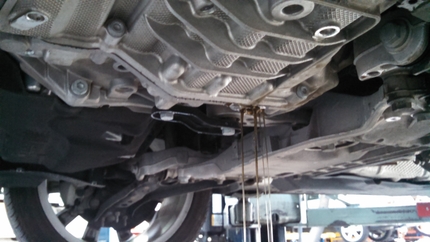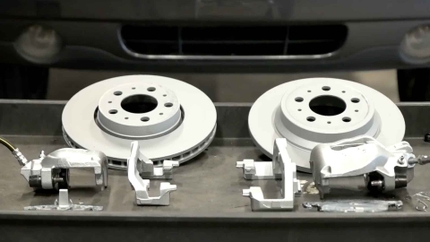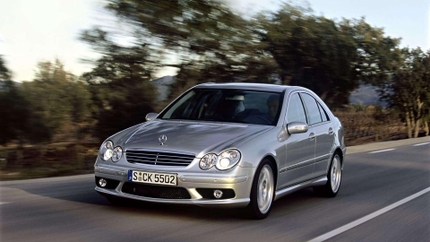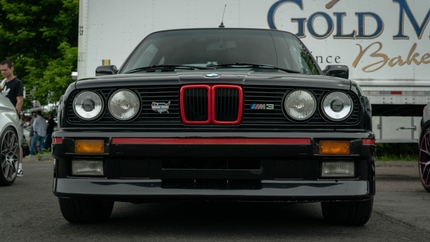- 02/05/2014
- 3 Min Read
- By: Gareth Foley
Bushings: The Most Overlooked Suspension Components

It’s about time we chat about some of the products at FCP Euro that can bring your tired and possibly worn out vehicle back to life. That past life that forced you to grab that puppy the day you saw her. That same look, shape, and roar, that established that initial connection you and she had. Sorry, I’m getting a little carried away and delving into my old relationships a bit, but let’s not let that stop us. Yes, it’s possible to bring your vehicle back to those beautiful factory specifications and we’re going to show you how.
One of the most overlooked suspension components on most vehicles is the bushings. Bushings are used in many different applications on vehicles and there are so many different variations of them available for so many different tasks.
To put it simply, a bushing is a type of vibration insulator that provides an interface between two parts. Bushings help dampen the energy transmitted between moving parts through the bushing. This helps drastically reduce the transfer of vibration to the passenger cabin in the car. All manufacturers have NVH standards (Noise Vibration Harshness) to meet. The design of rubber bushings has helped meet this standard for decades. In fact, Walter Chrysler was a leader in encouraging the adoption of rubber mounts. These original rubber bushings were used as motor mounts, which drastically cut down on vibration. Fast-forward to modern day, where rubber bushings are used everywhere on your vehicle.
These rubber bushings are used for every application where two components need to be mounted together where vibration is a concern. Brief list of some of the most common bushings on most passenger cars:
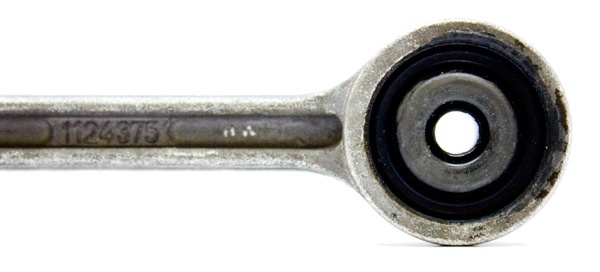
Where are my bushings
- Alternator bushings
- Control arm bushings
- Shock absorber mountings
- Sway bar links
- Transmission shifter
- Motor mounts
- Sub frame mounts
There are several variations of rubber mounts on the market today, but we'll get into those a little later. First, let’s check out some of the most common types of bushings installed on cars from the factory.
As stated earlier, manufacturers worry about making sure their vehicles meet necessary NVH standards. Every moving part on your vehicle causes some type of noise. Your vehicle has countless rubber bushings installed from the factory on areas that are going to, no doubt, generate noise. A majority of these bushings are tied into your vehicles suspension. One of the most common types of suspension bushings that fail are control arm bushings. Depending on the design of the control arm and the type of bushing, it is common for the factory bushing to be liquid filled. Liquid filled bushings can also be found on some motor mounts and sub frame mounts. These hydro bushings are used due to their ability to isolate vibrations and to ensure a comfortable noise free ride. Over time, the rubber that encases the liquid fill dries out or tears from fatigue, causing the liquid to leak out. At this point, you have a few options on replacement parts.

Types of bushings
- OEM
- Heavy Duty
- Polyurethane
OEM Replacement: for predictable NVH and smooth operation
Your first option is to replace your failed bushing with an OE version. Why, because you want to retain that factory feeling we were just talking about to your car. Hydro filled bushings are fairly durable for the most part and are excellent at preventing the transfer of vibration to the passenger cabin. Hydro bushings are especially useful on luxury vehicles where a smooth ride is paramount. The best method to check for a failed hydro bushing is to inspect for moisture around the mount. If you see an oily residue oozing around the mount, this is a guarantee that the mount has failed and needs to be replaced. For these types of bushings, FCP highly recommends sticking with a Genuine or OEM part to ensure proper performance. We find that replacing worn bushings with OEM replacements is the best way to go if you wand to retain your vehicles performance, above all else. Why mess with what engineers spent countless hours working on?
Heavy Duty: for upgraded performance and improved durability
You don’t always have to be stuck with a standard OEM part. That’s just not always the case. Depending on your car and the application you may have, several different options are available to you for replacement bushings. One of the most common bushing types FCP sells is heavy-duty bushings from Meyle called Meyle HD. These bushings are redesigned to address failure of OEM style bushings. Typically, Meyle addresses the issue by replacing a fluid filled busing with a completely solid bushing. The solid design that Meyle implements helps prevent tearing and warping of the rubber over your vehicles life. Essentially, it’s a much stronger part that performs better in most areas than an OEM equivalent. In suspension applications, you will get improved road feel with a solid bushing. You will notice slightly more noise over bumps, but we don’t find that these bushings make the car any more noisy or uncomfortable to drive, overall. We typically recommend Meyle HD replacement bushings for drivers who have some performance upgrades or drive their vehicles over poor roads, needing added durability. We highly recommend Meyle HD bushing parts for street driven cars, which may see occasional track use, as well. Between the three options, we like to consider the Meyle HD option Goldilocks for most customers.
Polyurethane: For ultimate performance and durability
For the utmost performance over factory bushings, your choice is going to be polyurethane. Polyurethane is more durable than traditional rubber bushings of any variant, plus it reduces flex. This makes poly bushings ideal for suspension applications where flex needs to be reduced. We find that customers often order poly bushings because of durability reasons, as well as the added performance gain from having suspension bushings that do no flex as much. In addition to suspension bushings, it is also common for people to upgrade their motor and transmission mounts to polyurethane. This helps significantly reduce drivetrain flex and offers a much stiffer platform that is important to high performance applications.
Despite all the positives of polyurethane bushings, there are a few shortcomings. For one, polyurethane is stiff. Stiff bushings are great for performance, but are also poor or inadequate for NVH standards. Polyurethane is practically solid when compared to rubber and does not absorb or disperse vibrations in the same way. In addition, polyurethane does not flex very much. Polyurethane also needs to be lubricated properly or squeaks will occur. This is particularly an issue when the bushings are not installed properly. Occasionally, adding grease or lube to poly bushings is required and is not a simple install. Due to the inherit stiffness of polyurethane, we typically do not recommend their use on street driven cars in most applications. Often times, we find that it makes most cars chatter and “nervous”, especially over poor roads. However, there are some areas where polyurethane can be useful on street driven cars are for shifter bushings, alternator mounts, and sway bar bushings. Poly bushings in these applications will add durability, without affecting NVH too much.

There is still one other type of bushing available on the market, but we recommend these for racing applications only. Solid bushings are exactly what they sound like, solid. They are usually billet or solid aluminum and allow no flex. Because of this , they offer incredible stiffness and long term reliability. However, they are noisy and can even damage a road car as they are not designed for street use. The lesson here is to not bother with solid mounts unless you are trying to build a racecar.
| OEM Bushings | Heavy-Duty Bushings | Polyurethane Bushings | |
|---|---|---|---|
| Advantages |
|
|
|
| Disadvantages |
|
|
|
| Application | Ever day average driver, with no interest in upgrades |
Performance oriented drivers looking for durability on street driven cars |
Performance only, highest durability |
Now you know that there are several different options available for your vehicle when it comes to replacement bushings. Your decision should come down to what your needs and expectations are. We hope that you have learned more about bushing materials and what are available on the market.





